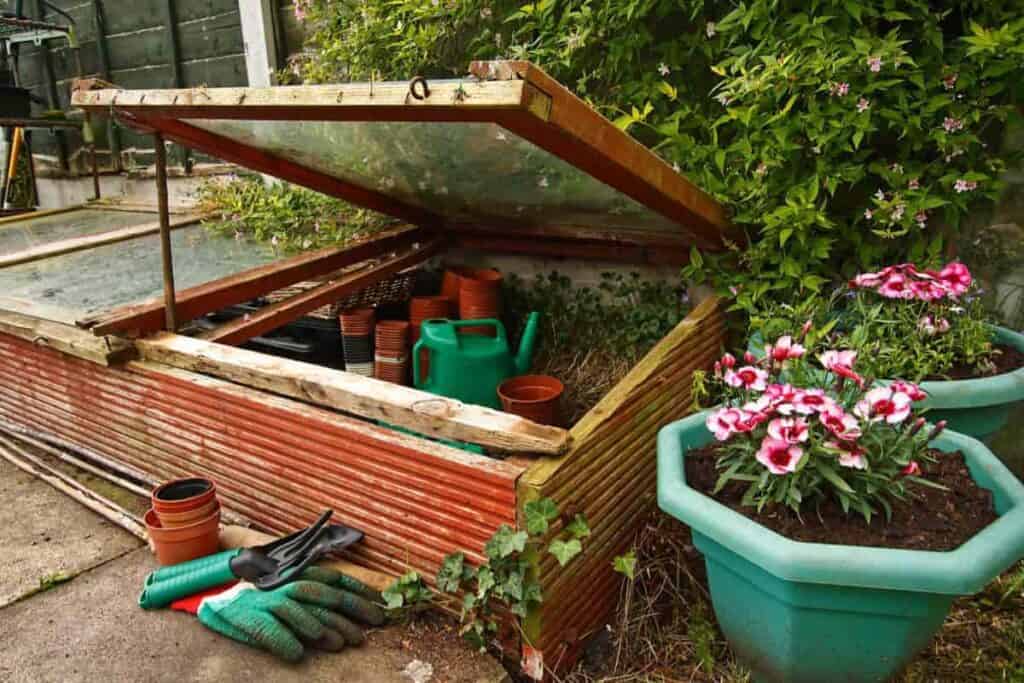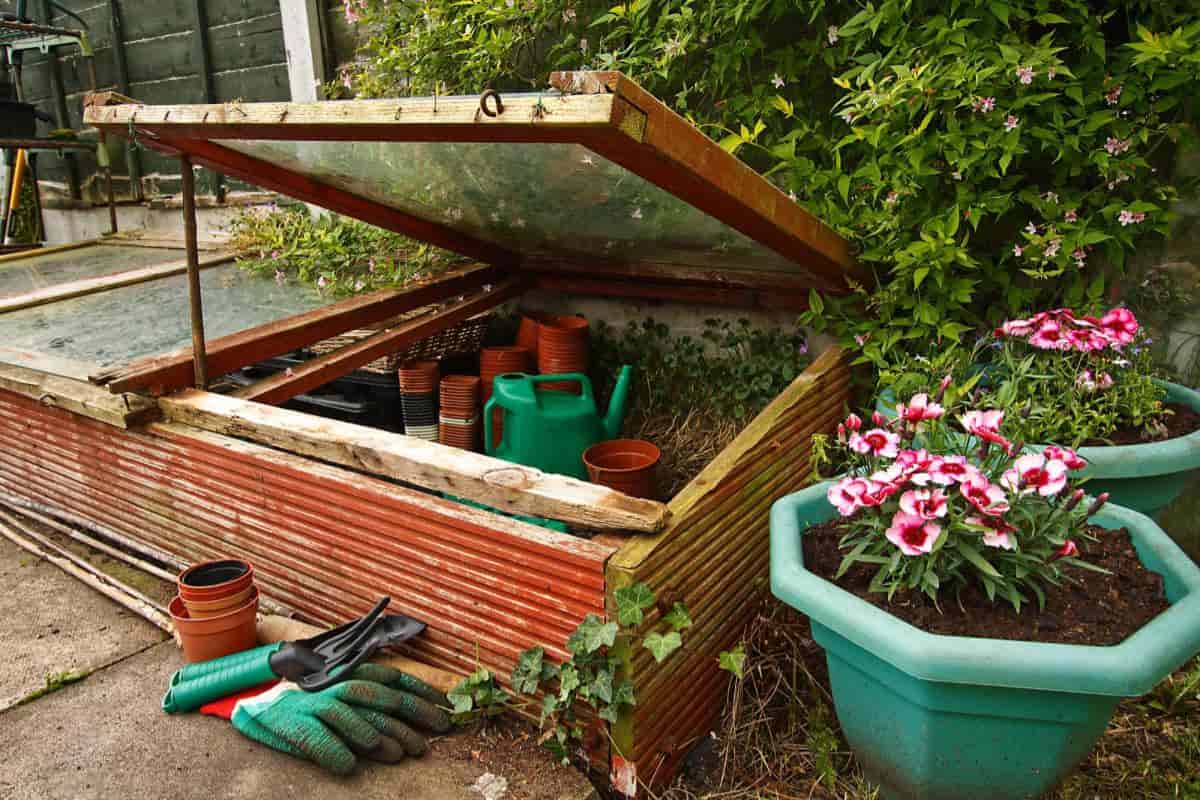A fall and winter coldframe activity making a comeback in many parts of the country is the growing of sweet violets (Viola odoerata).

Requiring cool nights and sunny days, violets are well suited to cold frame gardening. The temperature can drop as low as 45° Fahrenheit in fall and lower in winter without damaging plants or flowers.
Best Violet Plants To Plant
The best violet plants for cold frame growing are those from spring divisions cultivated outdoors throughout the summer.
Dug in September, the plants are set 10” inches by 10” inches in the cold frame with crowns exposed.
Soil should be at least 7” inches deep, with one-third of its bulk decomposed compost, rotted manure, cut-up sod, or well-decayed leaf mold.
Leafmold is best fortified with 4 pounds of shredded cattle manure per bushel.
Sun Protection
After planting, the soil is watered, and light shade is provided for two or more weeks—with plenty of air furnished at all times.
Plants should flower in November. Later, flowering will cease and begin again in January or February, when days lengthen, and there is more sun.
Extra protection is provided in winter. Some home growers use electric heating cable strung around the inside of the cold frame (not under the soil, as violets require a cool root space).
Watering is done in the forenoon so that foliage will dry before evening. Ventilation is supplied on clear days.
Fragrant Varieties
The more fragrant varieties among singles are PRINCESS OF WALES, PRINCESS MARY, and ROYAL ROBE, a very dependable violet.
The rosette-like doubles are, if anything, even more fragrant.
Among these are the following:
- MARIE LOUISE
- DUCHESS OF PARMA
- LADY HUME CAMPBELL
- MRS. J. J. ASTOR
- DOUBLE RUSSIAN
This last is very hardy.
Germinating Plants
So far as the cold frame is concerned, September is to fall, and March is to spring.
Each is a busy preparation period—March for germinating plants for later outdoor transplanting, September for starting plants which will mature in the cold frame in late fall or winter.
September is also the time to make your glass and putty repairs, for with cold weather on its way, a sash will soon be needed.
Uses of Cold Frame
As for the specific uses for the cold frame in fall, they are so many and diverse that there is never enough space for all that could be done.
The growing of sweet violets we’ve considered. Let’s look now at another excellent project—the cold-frame vegetable garden.
The vegetable grower can sow seeds of lettuce, endive, radishes, Chinese cabbage, and Upland and Curled cress now and enjoy crisp salad material from November to Christmas.
However, lettuce may not head in northern sections, and cress may cease production after October.
Sowing of Seeds
Immediate sowing, using the superior seed for rapid germination, thinning lettuce instead of utilizing transplants, and providing extra night-time protection for the glass to save heat will help vegetables mature faster.
Transplanted or thinned lettuce plants should be spaced 6″ inches by 6″ inches; Chinese cabbage and endive be 9″ inches by 9″ inches.
Soil for all vegetables should be loose and friable but not over-enriched with active fertilizer.
Two shovels of compost, 3 pounds of sheep manure, and one pound of superphosphate will suffice for a 6-foot-square area.
New Garden Transplants Varieties
Application of a liquid concentrate every two weeks will keep growth active. The liquid is particularly effective for new garden transplants to the cold frame.
As to varieties in lettuce, I’d recommend the following:
- MIGNONETTE
- OAKLEAF
- SALAD BOWL
In radishes:
- SCARLET GLOBE
- COMET
- CHERRY BELLE
WHITE ICICLE, a long tapering radish with white flesh and crisp taste, is a fast grower. CHI-III-LI is the best in Chinese cabbage and DEEP HEART, good endive.
44659 by P. J. Mckenna
